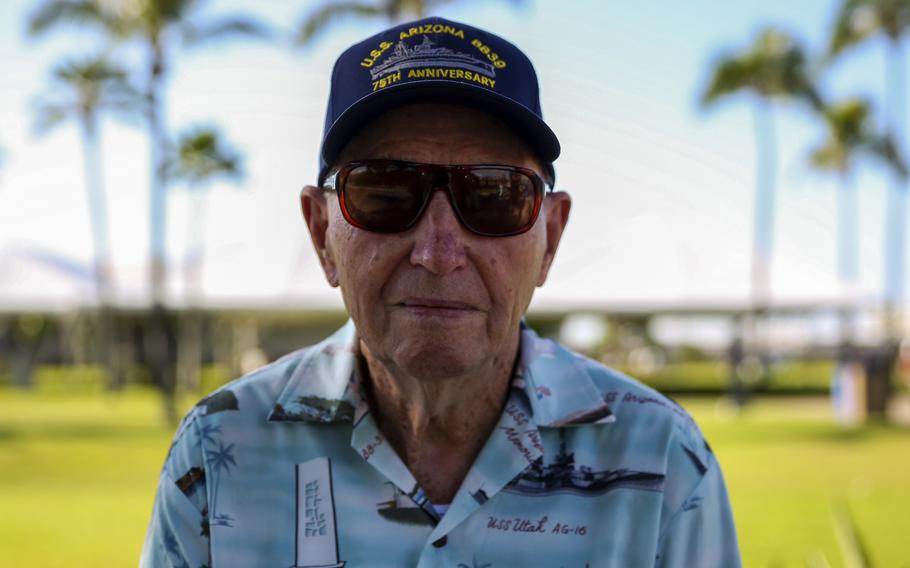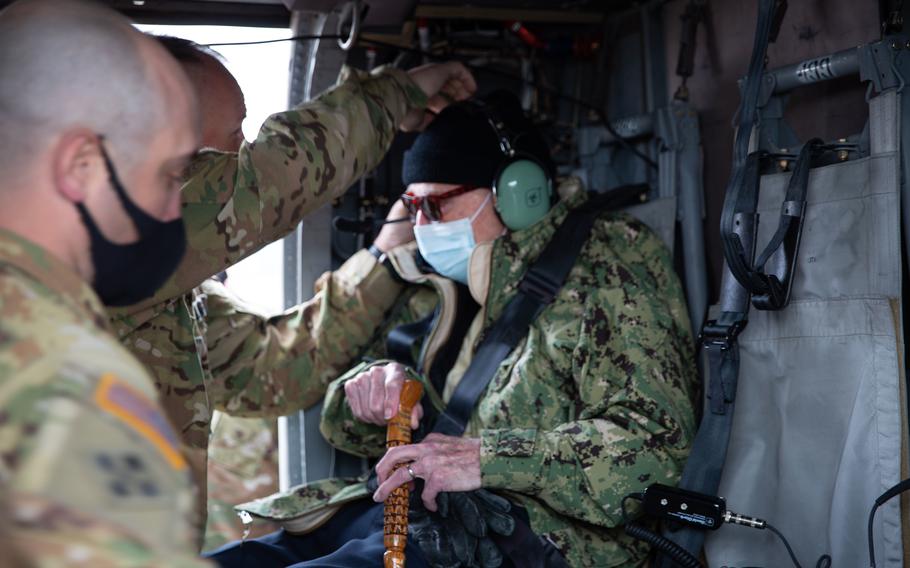
Howard “Ken” Potts poses at the Freedom Bell Opening Ceremony and Bell Ringing at USS Bowfin Submarine Museum & Park on Pearl Harbor, Hawaii, Dec. 6, 2016. (Robert Sweet/U.S. Marine Corps)
One of only two remaining survivors of the sinking of the USS Arizona on Dec. 7, 1941, died Friday in Provo, Utah, the National Park Service announced that day.
Howard “Ken” Potts had turned 102 last week.
His death leaves Lou Conter, 101, the only remaining survivor out of the 335 men who escaped the inferno that enveloped the battleship that sank to the bottom of Pearl Harbor, Hawaii, during the surprise attack.
The attack took the lives of 1,177 sailors and Marines on the Arizona, the single greatest loss of life on any U.S. warship. The submerged shipwreck is now the site of the USS Arizona Memorial, which draws almost 2 million visitors each year.
The Park Service said in a news release Friday that it had authorized the flag over the memorial to be flown at half-staff through April 28 to honor Potts.

Howard “Ken” Potts celebrates his 100th birthday on April 15, 2021, with a flight on a UH-60 Black Hawk helicopter by members of the Utah National Guard’s 2nd General Support Aviation Battalion. (Ileen Kennedy/U.S. Army)
Potts was born and raised in Honey Bend, Ill., from where at age 18 he enlisted in the Navy on Oct. 4, 1939. He was assigned to the USS Arizona — his first and only ship during his enlistment — on Dec. 31, 1939, working as a crane operator.
Potts was ashore on nearby Ford Island when the attack commenced just before 8 a.m. that Sunday morning in 1941.
“Attempting to navigate through the flaming harbor, Potts and other crewmen pulled men from the water and took them to shore on Ford Island,” the Park Service news release said.
“My best day in the Navy is when I survived December 7th, 1941; it was also my worst day,” Potts told photographer D. Clarke Evans in a 2014 interview.
“When the officer gave the command to abandon ship, some went hand-over-hand on those lines to Ford Island and others swam,” Potts said in the interview. “The fact that Ford Island was there, saved a lot of lives.
“All the guns and ammunition were locked up when we were in port. I learned one thing on Dec. 7: a gun is no good without ammunition and you can’t do much fighting. When I was on Ford Island, I found a Colt .45 pistol and I carried it with me until the end of the war.”
Potts was subsequently assigned to the port director’s office, where he served until the end of the war.
In civilian life he worked as an auto salesman. He had lived in Provo the past 56 years with his wife, Doris, who survives him, the Park Service said.